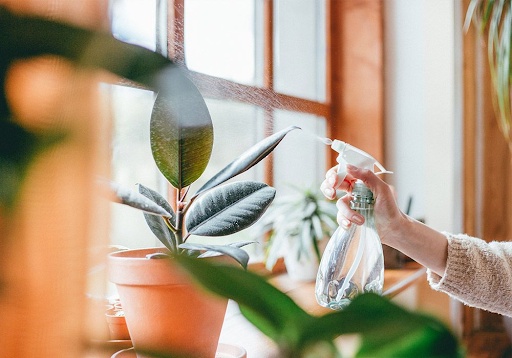In the realm of indoor gardening, the Rubber Plant (Ficus elastica) stands as a resilient and elegant choice, adding a touch of lush greenery to homes and offices alike. This ever-popular houseplant, also known as the Rubber Fig or Rubber Bush, is admired not only for its aesthetic appeal but also for its adaptability and relatively easy care. In this guide, we'll delve into the basics of Rubber Plant care, offering valuable tips and tricks to ensure your Ficus elastica thrives.
- Lighting Requirements
Rubber Plants are known for their preference for bright, indirect light. While they can tolerate some shade, placing them in a spot with filtered sunlight ensures optimal growth. Avoid exposing them to direct sunlight for prolonged periods, as this can lead to scorched leaves. If your Rubber Plant shows signs of reaching towards the light source, it might be time to rotate its position for even growth.
- Watering Wisdom
Proper watering is crucial for the health of your Rubber Plant. Allow the top inch of the soil to dry out before watering, and ensure that excess water can drain away to prevent root rot. Overwatering is a common mistake, so it's essential to strike a balance. During the growing season (spring and summer), water more frequently, and reduce the frequency in the dormant season (fall and winter). Always use a well-draining potting mix to avoid waterlogged soil.
- Humidity Matters
Native to the rainforests of Southeast Asia, Rubber Plants thrive in high humidity. While they can adapt to average indoor humidity levels, occasional misting or placing a humidity tray nearby can mimic their natural environment and promote healthy growth. If you live in a dry climate, consider investing in a humidifier to create an ideal atmosphere for your Rubber Plant.
- Temperature Considerations
Rubber Plants prefer temperatures between 60-75°F (15-24°C). They can tolerate slightly cooler conditions, but it's crucial to protect them from drafts and sudden temperature drops. Avoid placing them near windows during the winter months, as the cold glass can harm the foliage.
- Feeding Ficus
During the growing season, from spring to early fall, provide your Rubber Plant with a balanced liquid fertiliser every 2-4 weeks. Dilute the fertiliser to half the recommended strength to prevent over-fertilizing, which can lead to salt buildup in the soil. In the dormant season, hold off on fertilising or do so sparingly.
- Pruning for Perfection
Regular pruning helps maintain the Rubber Plant's shape and encourages bushier growth. Trim any leggy stems to promote a more compact appearance. Additionally, remove any yellow or damaged leaves to enhance the plant's overall aesthetics and health.
- Soil Selection
Choosing the right soil is crucial for the health of your Rubber Plant. Opt for a well-draining, aerated potting mix with a slightly acidic to neutral pH. A mix designed for tropical plants or a combination of peat moss, perlite, and pine bark works well. Repotting every 1-2 years, particularly when the plant outgrows its container, helps refresh the soil and provides essential nutrients.
- Container Considerations
Selecting an appropriate container is as important as choosing the right soil. Ensure the pot has drainage holes to prevent waterlogging, promoting healthy root development. As Rubber Plants can grow quite tall, choose a container that provides stability and prevents toppling. If you desire a bushier appearance, opt for a wider pot rather than a deeper one.
Conclusion: Elevating Your Indoor Oasis with Rubber Plants
Embracing the allure of succulent plants like the Rubber Plant not only enhances your indoor environment but also contributes to a sense of well-being. The adaptability and low-maintenance nature of Rubber Plants make them an ideal choice for both novice and experienced plant enthusiasts. So, as you embark on your indoor gardening journey, consider introducing the beauty of succulent plants like the resilient Rubber Plant to elevate your living space.


No comments yet